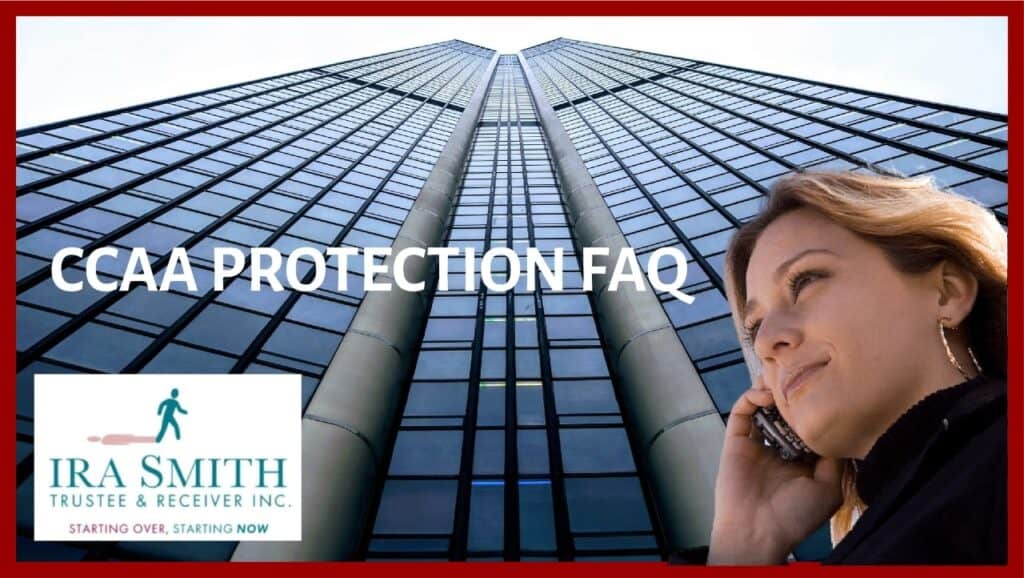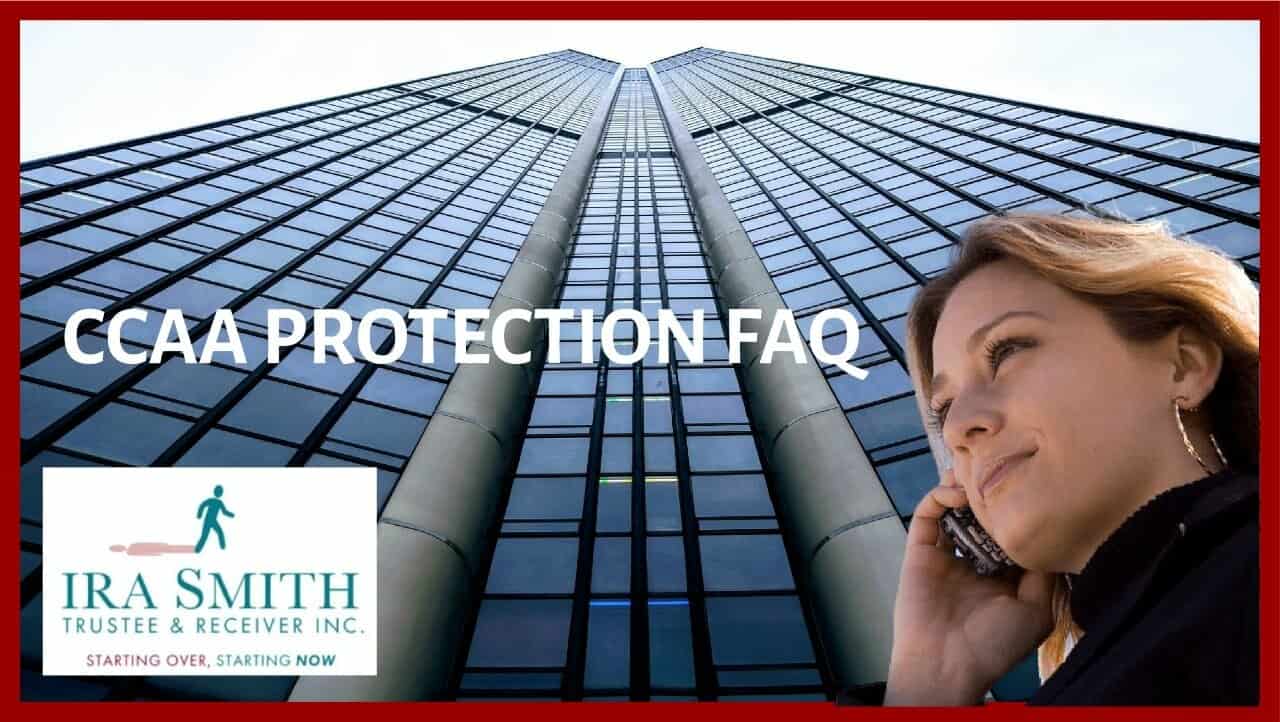What is CCAA protection?
The Companies’ Creditors Arrangement Act (CCAA) allows insolvent companies owing creditors $5 million or more to seek CCAA protection. This can help them restructure their business and settle their debts over time. The CCAA gives such companies the ability to restructure their business affairs and financial obligations. In Canada, the CCAA operates under the authority of the federal government and is administered by the courts of each province.
If a debtor company owes less than $5 million, it can restructure under Part III Division I of the Bankruptcy and Insolvency Act (Canada). This federal insolvency statute has streamlined procedures for handling insolvency restructuring cases. There’s no prohibition against using this statute if the company owes $5 million or more. Those larger companies just have a choice as to which statute to restructure under. This kind of restructuring is done in order to avoid liquidation through the filing of an Assignment in Bankruptcy. By successfully restructuring, the company can avoid job losses, claims by employees and the other negative effects of bankruptcy.
In this Brandon’s Blog post, I’ll be discussing CCAA protection for companies needing to go through a financial restructuring by making the Initial Application to the court. I’ll also be talking about a recent court decision that will be of interest to companies needing to restructure when their bank is demanding that all loans be repaid and they are trying to enforce their security.
Is CCAA protection the same thing as chapter 11?
Bankruptcy protection is a term closely associated with a US company filing under Chapter 11 of the US Bankruptcy Code. In Canada, it most likely means that the Canadian company has applied to a Canadian court to make its application for CCAA protection under the CCAA.
What is CCAA protection in Canada and “The Stay”?
Creditor protection under the CCAA is a process that provides companies with some relief from their creditors. This process can help them to reorganize their affairs and continue operations.
CCAA protection can provide some much-needed breathing room for companies that are struggling to stay afloat. It can give them time to restructure their affairs and come up with a plan to repay their creditors. A debtor company files its application for creditor protection in order to obtain an Initial Stay from the court. This will allow the company to begin restructuring its financial affairs.
While the CCAA protection order is in place, creditors are not allowed to take any action to recover money owed to them. They can’t try to seize the company’s property or petition the court for its bankruptcy, without the prior approval of the court. This is called the CCAA protection “stay of proceedings”.
A CCAA Canada filing is typically made when a business is insolvent and seeking to restructure its debts. The goal of the business in CCAA protection is to reach a satisfactory agreement with its creditors, which can include both secured and unsecured creditors. I will talk more about the support of secured creditors when I discuss the court case below.
Comeback hearing: Can CCAA Canada protection be extended?
Yes. Initial Order applications are often submitted on an urgent basis with prior notice only to key stakeholders such as senior lenders. Initial orders usually contain a “comeback” clause allowing stakeholders who did not receive initial notice an opportunity to attempt to change the terms of the CCAA protection order. Under the CCAA, Section 11.02(1) states that the Initial Order cannot be effective for more than 10 days.
The Canadian court system requires that there must be a “comeback hearing,” where interested parties can challenge aspects of the initial order, or even request additional relief before the order is extended. This means that the comeback hearing must be scheduled for within those 10 days. This ensures that the process moves forward promptly while protecting the interests of those involved. At the comeback hearing, the court will then assess the evidence before making a decision on whether or not to extend CCAA protection. If the court decides to extend protection, it will only do so for a limited amount of time.
The amount of time given will be at the discretion of the court and is definitely not open-ended. The company and its Monitor will be required to provide regular reports to the court detailing this progress.
The court will determine the next reporting period based on the information provided, which will allow the debtor company to continue its restructuring. The court may also be asked to make other orders, such as borrowing authority for financing the debtor company’s operations.
CCAA protection: What is the role of the Monitor?
The Monitor is the Licensed Insolvency Trustee (LIT) appointed by the court to monitor the business and financial affairs of the debtor company in a CCAA proceeding. The LIT’s role is to ensure compliance with the law, court order(s), and terms of the debtor company restructuring plan.
The Court-appointed Monitor is responsible for assisting with the preparation of the restructuring plan, formally known as the Plan of Arrangement and sometimes referred to as a Plan of Compromise. Monitors act as financial advisors to the insolvent company and they also advise creditors on the claims process and oversee voting at each meeting of creditors.
A Monitor must submit regular reports to the court summarizing the debtor company’s activities and the progress of the case. This includes the claims process when they get to that point in the administration.
These reports are published online and are accessible to creditors and interested parties. One of the ongoing responsibilities of the Monitor in its reporting is to advise if, in the Monitor’s opinion, the debtor company under CCAA protection is continuing to act in good faith and carrying out its restructuring on a timely basis.
CCAA protection: The Plan of Arrangement or Compromise
The company usually begins talking with its creditors and investors right away after the initial order is made. To do this, it may end or give away unwanted and especially unprofitable contracts, fire employees, sell property, negotiate new credit terms, change its corporate structure, and take other restructuring steps to ensure the viability and profitability of the company.
The court will ultimately be asked to approve all major actions in order to allow the company to move towards a viable Plan of Arrangement it believes will garner the support of the necessary majority of creditors.
The Plan of Arrangement or Compromise is the proposal presented by a company to its creditors detailing how it intends to resolve the issues it is facing and how the amounts owed to creditors will be compromised, An arrangement is a broader term that encompasses any plan for reorganizing. The distinction between “compromise” and “arrangement” is in practice, immaterial.
Different creditors are often treated differently based on terms of priority. This affects the order and amount they will be paid under the restructuring plan.
The first step in a CCAA restructuring will be to prioritize any government claims that are considered trust claims. Next will be any new charges ordered by the court as part of the restructuring. Examples of such court-ordered charges are amounts owing under a Key Employee Retention Plan and the lender financing the company during the restructuring phase.
The pre-filing secured creditors are typically at the forefront next when it comes to recovering their funds. They may have security in the form of a general security agreement or mortgage.
Unsecured creditors are next in line for payment. These creditors have provided goods or services to the company on credit, without receiving any security in return. In retail insolvencies, the company under creditor protection has to decide as part of its business plan if it is going to treat customers who have paid deposits for items they have not yet picked up as unsecured creditors or if they will complete the sale providing value for the prior deposits.
Such differing priorities will influence how the Plan of Arrangement or Compromise is constructed.
CCAA protection and the financial statements of the debtor
When a company seeks CCAA protection from the court, they are required to submit a projected cash flow statement. This document projects the company’s expected revenue and expenses from ongoing business operations and any required financing over the next 12 months and is used to assess whether or not it can fund day-to-day operations and survive during the CCAA protection proceedings.
Furthermore, the company must provide copies of all financial statements issued during the one-year period prior to the date of the Initial Application. If none were issued during this time period, it should provide a copy of the most recent financial statement.
CCAA protection: Creditor approval of the Plan of Arrangement or Compromise
A company can establish separate classes of creditors to increase the chances of a favourable vote for the Plan of Compromise or Plan of Arrangement. There must be some form of shared characteristic or similarity amongst the creditors in each class in order to qualify for each such classification.
In addition to the simple majority test, the creditors in each class who are voting must vote in favour of it by at least 2/3 of the total value of the creditors voting in each class.
CCAA protection and court approval of the Plan of Arrangement or Compromise
The court may approve the Plan once they have been approved by each participating class of creditors. The Plan will include all negotiated compromises and arrangements that deal with any matter, including claims against directors and amendments to the articles of incorporation or letters patent incorporating the company,
A Plan cannot be approved by the court if a provision is not made for settling “super-priority” claims relating to:
- compensation and reimbursement claims by employees other than officers and directors;
- pension plan contributions (except where an agreement has been reached with the relevant pension regulator); and
- unremitted employee source deductions from employee paycheques for taxes and other deductions.
Additionally, any equity claims cannot be authorized by the court through a compromise or arrangement until all other claims have been paid in full.
CCAA protection: You can access CCAA filing records and court documents through 2 sources
There are two ways to find CCAA filing records and court documents. The easiest way is to go to the Monitor’s website specifically set up for the CCAA case. All documents filed by the Monitor in court and all court orders will be there. The second source is the court file itself.
This leads us to the actual court case I mentioned at the very beginning of this CCAA protection blog post. It is a decision dated October 14, 2022, by the Honourable Justice MacDonald of the Supreme Court of Newfoundland and Labrador in Bankruptcy and Insolvency. The case is Edward Collins Contracting Limited (Re), 2022 NLSC 149.
It is an application by a group of companies in the construction industry seeking an Initial CCAA protection Order for the debtor company. The case is notable for one factor: the companies’ main secured creditor, the Royal Bank of Canada, is opposing the application.
The companies were operating under a forbearance agreement. However, Royal Bank claims that they were in breach of their forbearance agreement and that the Bank should be allowed to have a Court-appointed Receiver. Although they did not provide any evidence in their material, in argument, the Bank claimed the companies were not acting in good faith.
The court ruled that if the companies’ application for CCAA protection is approved, then the Royal Bank of Canada’s application for a Court-appointed receiver is moot.
The court’s entire decision and His Honour’s thought process in considering all issues can be located online. Of specific relevance to me is His Honour’s thought process and careful consideration of all the points he must consider in deciding whether or not to grant the requested relief of CCAA protection.
The court considered the following:
- Do the companies have proper standing under the CCAA?
- Have the companies satisfied the test to allow the granting of grant an Initial Order?
- If so, should the company’s conduct during the prior Consent Stay period cause it to refuse the Initial Order?
The court found that the CCAA applies to the debtor company and the affiliated debtor companies as they are all insolvent corporations or have committed an act of bankruptcy and owed their creditors in excess of $5 million. The court also found that the companies were entitled to CCAA protection from creditors and even the Royal Bank of Canada notwithstanding its opposition to the Initial Application and the granting of the Initial Order. The Initial Order was made.
You can read His Honour’s lengthy analysis if you wish, as it is very detailed and provides a great deal of insight.
You Owe Money—The CCAA protection
I hope you enjoyed this Brandon’s Blog on CCAA protection.
Revenue and cash flow shortages are critical issues facing entrepreneurs and their companies and businesses. Are you now worried about just how you or your business are going to survive? Those concerns are obviously on your mind. Coming out of the pandemic, we are now worried about its economic effects of inflation and a potential recession.
The Ira Smith Team understands these concerns. More significantly, we know the requirements of the business owner or the individual that has way too much financial debt. You are trying to manage these difficult financial problems and you are understandably anxious.
It is not your fault you can’t fix this problem on your own. The pandemic has thrown everyone a curveball. We have not been trained to deal with this. You have only been taught the old ways. The old ways do not work anymore. The Ira Smith Team makes use of new contemporary ways to get you out of your debt problems while avoiding bankruptcy. We can get you debt relief now.
We look at your whole circumstance and design a strategy that is as distinct as you are. We take the load off of your shoulders as part of the debt settlement strategy we will draft just for you.
We understand that people facing money problems require a lifeline. That is why we can establish a restructuring procedure for you and end the discomfort you feel.
Call us now for a no-cost consultation. We will listen to the unique issues facing you and provide you with practical and actionable ideas you can implement right away to end the pain points in your life, Starting Over, Starting Now.



